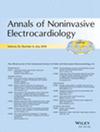Tracing Visual Expertise in ECG Interpretation: An Eye-Tracking Pilot Study
Abstract
Background
Visual expertise is pivotal for accurate ECG interpretation. We aimed to identify and measure expertise-based differences in visual search patterns, cognitive load, and diagnostic accuracy during ECG analysis using eye-tracking technology.
Methods
First- to third-year residents and board-certified expert cardiologists interpreted ECGs of patients with suspected acute coronary syndrome, while eye-tracking glasses recorded fixation count, duration, and pupil dilation. Diagnostic accuracy and cognitive load via NASA Task Load Index were analyzed. Heatmaps illustrated relationships between cognitive load, perceived workload, and self-assessed performance across experience levels and ECG task complexities.
Results
Expert readers interpreted ECGs significantly faster than residents (107.6 ± 32.8 vs. 205.31 ± 57.43 s; p < 0.001) and demonstrated higher diagnostic accuracy across all levels of task difficulty (p < 0.001). Eye-tracking analysis revealed that experts exhibited fewer fixations (67.7 ± 25.7 vs. 143.7 ± 29.9; p < 0.001) and longer fixation durations (3.9 ± 0.7 vs. 3.2 ± 1 s; p = 0.032) than residents. Experts also showed lower pupil dilation changes (4.8% ± 2% vs. 10.5% ± 4.2%; p = 0.015). Increased task difficulty was associated with greater pupil dilation, particularly among novices (mean pupil dilation for difficult tasks 13.4% ± 4.1% vs. 7.3% ± 2.3% for easy tasks; p = 0.008), indicating higher cognitive demand. Experts maintained superior self-assessed performance (8 ± 0 vs. 7 ± 1.2; p = 0.009) and reported lower perceived negative workload (4.5 ± 1.45 vs. 6 ± 0.55; p = 0.041).
Conclusions
In this pilot study, expert readers achieved faster and more accurate diagnoses, exhibiting more efficient visual search patterns and lower cognitive load. Pending external validation, our findings suggest that ECG training programs should focus on developing targeted visual techniques, cognitive efficiency, and adaptive coping strategies to enhance accurate interpretation.


 求助内容:
求助内容: 应助结果提醒方式:
应助结果提醒方式:


